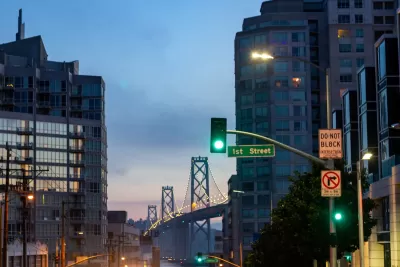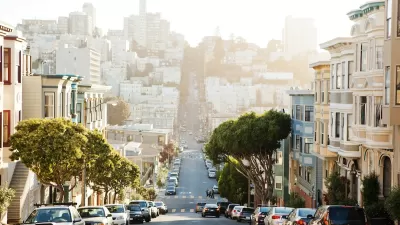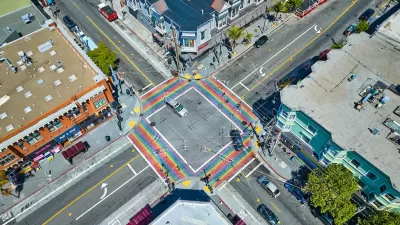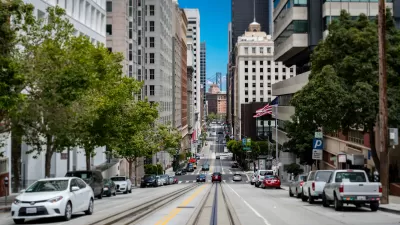A proposal to prohibit turns on red at some downtown intersections prompted calls for a blanket ban for the entire city.

The San Francisco Municipal Transportation Agency Board of Directors declined to act on a proposal that would have banned right turns on red at roughly 200 downtown intersections, instead calling for agency officials to implement the policy citywide.
According to a CBS News article, SFMTA engineer Ricardo Olea says a blanket ban could “create a shock to the system” for drivers. “Olea said the idea behind the two-thirds proposal was to make San Francisco's northeast quadrant into a ‘center of gravity’ where drivers could get used to not making turns on red lights, before expanding outward.” Restricting turns at all intersections could lead to backlash from drivers at intersections with little pedestrian traffic where right turns could be made safely, Olea noted.
Three Directors disagreed, asking if “Creating a whole paradigm shift might be easier than relying on drivers reading signs each time they pulled up to an intersection, especially with the number of signs alongside San Fransisco roadways.” Other advocates at a public meeting focused on pedestrians and bicyclists, who can make safer decisions if they know drivers will make a right turn on red or not. “Improving the walkability of streets, more so than the safety of them, has driven San Francisco's push for right on red bans, according to a staff memo from ahead of the meeting.”
FULL STORY: SFMTA officials pause on right-on-red proposal, consider citywide ban

Study: Maui’s Plan to Convert Vacation Rentals to Long-Term Housing Could Cause Nearly $1 Billion Economic Loss
The plan would reduce visitor accommodation by 25,% resulting in 1,900 jobs lost.

North Texas Transit Leaders Tout Benefits of TOD for Growing Region
At a summit focused on transit-oriented development, policymakers discussed how North Texas’ expanded light rail system can serve as a tool for economic growth.

Why Should We Subsidize Public Transportation?
Many public transit agencies face financial stress due to rising costs, declining fare revenue, and declining subsidies. Transit advocates must provide a strong business case for increasing public transit funding.

How to Make US Trains Faster
Changes to boarding platforms and a switch to electric trains could improve U.S. passenger rail service without the added cost of high-speed rail.

Columbia’s Revitalized ‘Loop’ Is a Hub for Local Entrepreneurs
A focus on small businesses is helping a commercial corridor in Columbia, Missouri thrive.

Invasive Insect Threatens Minnesota’s Ash Forests
The Emerald Ash Borer is a rapidly spreading invasive pest threatening Minnesota’s ash trees, and homeowners are encouraged to plant diverse replacement species, avoid moving ash firewood, and monitor for signs of infestation.
Urban Design for Planners 1: Software Tools
This six-course series explores essential urban design concepts using open source software and equips planners with the tools they need to participate fully in the urban design process.
Planning for Universal Design
Learn the tools for implementing Universal Design in planning regulations.
Ascent Environmental
Borough of Carlisle
Institute for Housing and Urban Development Studies (IHS)
City of Grandview
Harvard GSD Executive Education
Toledo-Lucas County Plan Commissions
Salt Lake City
NYU Wagner Graduate School of Public Service





























